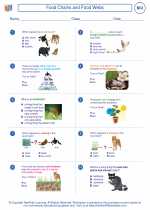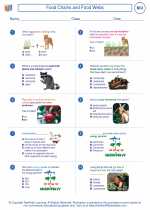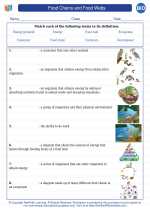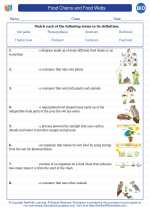Food Chains and Food Webs -> biosphere
What is the Biosphere?
The biosphere encompasses all the regions of the Earth where living organisms exist, including the atmosphere, the lithosphere (Earth's crust), and the hydrosphere (water bodies).
Components of the Biosphere
The biosphere is composed of various ecosystems, which are communities of living organisms interacting with each other and their physical environment. Examples of ecosystems include forests, grasslands, deserts, and aquatic environments.
Interactions within the Biosphere
Living organisms in the biosphere interact with each other and with the abiotic (non-living) components of their environment. These interactions include processes such as photosynthesis, respiration, predation, and competition.
Energy Flow and Nutrient Cycling
In the biosphere, energy flows through ecosystems via the food chain or food web. Nutrients are also circulated through the biosphere through processes such as the carbon cycle, nitrogen cycle, and water cycle.
Human Impact on the Biosphere
Human activities can have significant impacts on the biosphere, including deforestation, pollution, and climate change. Understanding these impacts is crucial for conservation and sustainable management of the biosphere.
Importance of Studying the Biosphere
Studying the biosphere is essential for understanding the interconnectedness of life on Earth and for addressing environmental challenges. It provides insights into the functioning of ecosystems and the impacts of human activities on the natural world.
[Biosphere] Related Worksheets and Study Guides:
.◂Biology Worksheets and Study Guides High School. Food Chains and Food Webs

 Worksheet/Answer key
Worksheet/Answer key
 Worksheet/Answer key
Worksheet/Answer key
 Vocabulary/Answer key
Vocabulary/Answer key
 Vocabulary/Answer key
Vocabulary/Answer key
